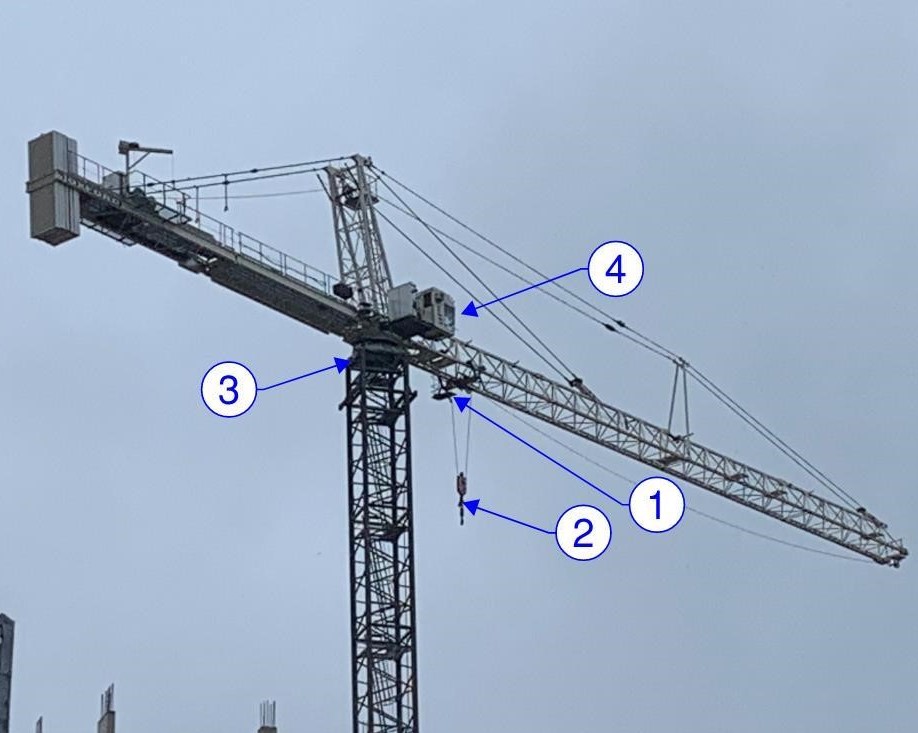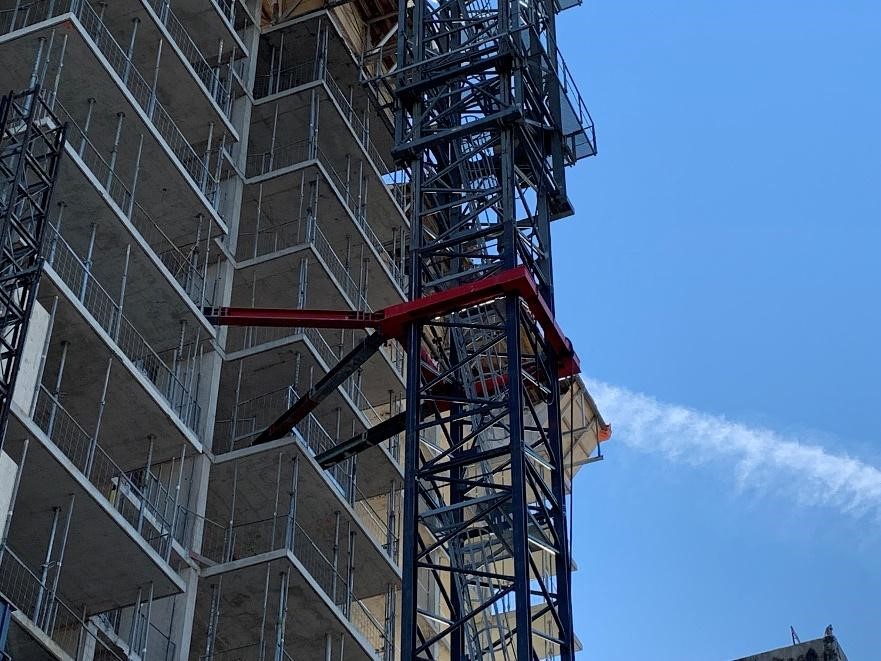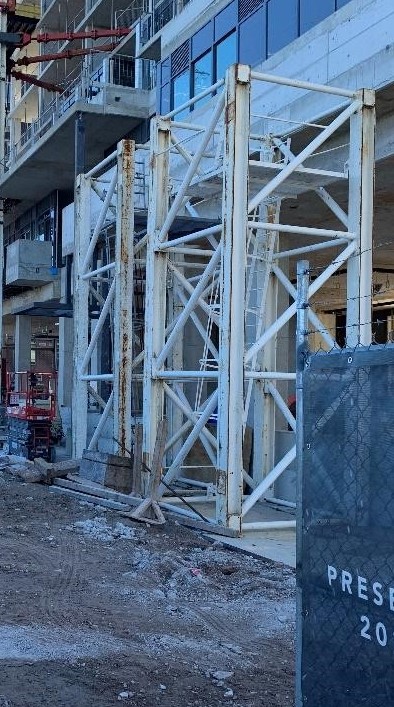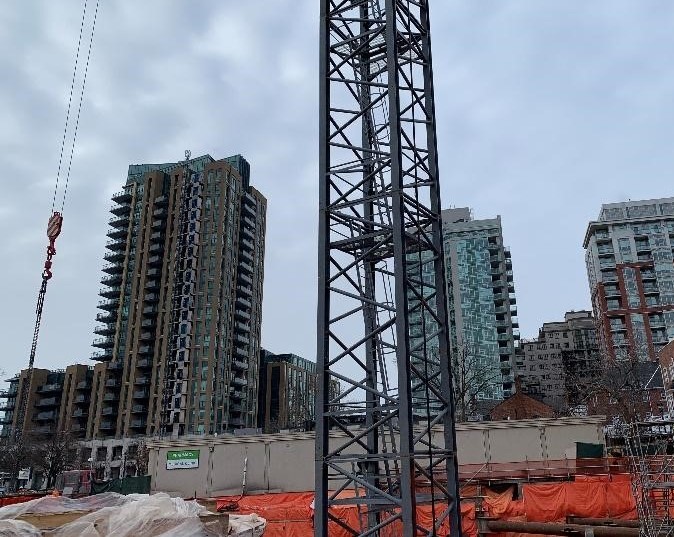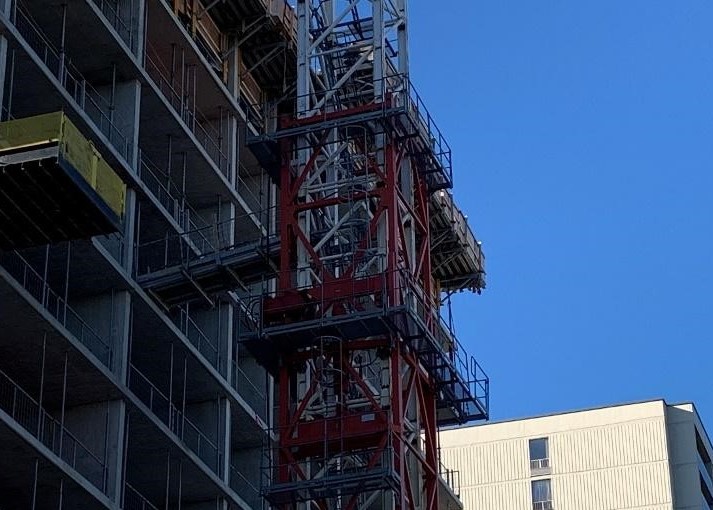Tower cranes have become an essential part of building high rises because of their height, efficiency, and flexibility. They do a whole lot of work while using a very small footprint on job sites that are often stressed for space. How do they not fall over? With a whole lot of planning and engineering.
Burlington is no stranger to tower cranes. Here’s how they work:
The basic principle of tower cranes is that the foundation and tower assembly is designed to bend in every direction. Tower cranes have strong foundations that keep them upright even when the centre of gravity falls outside the footprint of the tower (which is almost always the case, since its footprint is so small). If your personal centre of gravity falls out from between your feet, you fall over. Now imagine your feet bolted to the ground (bear with me). You would be able to lean far forward or backwards without falling over. You are now a tower crane!
The crane structure is made of the following basic parts (see Figure 1):
- The tower is the vertical truss that holds everything up. It is made of sturdy lattice-frame segments capable of withstanding high-torsion stresses caused by the rotation of the crane above.
- The jib is the horizontal truss to the front doing all the lifting. There is a walkway to the end of the jib for regular inspections.
- The counter jib is the horizontal truss to the back holding the counterweights, adding balance to the whole system — preventing the jib and the tower from falling forward under its own weight.
- The counterweights are located at the end of the counter jib to stabilize the crane at rest and during movement. They are typically made of concrete blocks.
- The apex is the vertical tower extension above the jib to which all the support bars are connected, locking the jib and counter jib in their horizontal position.
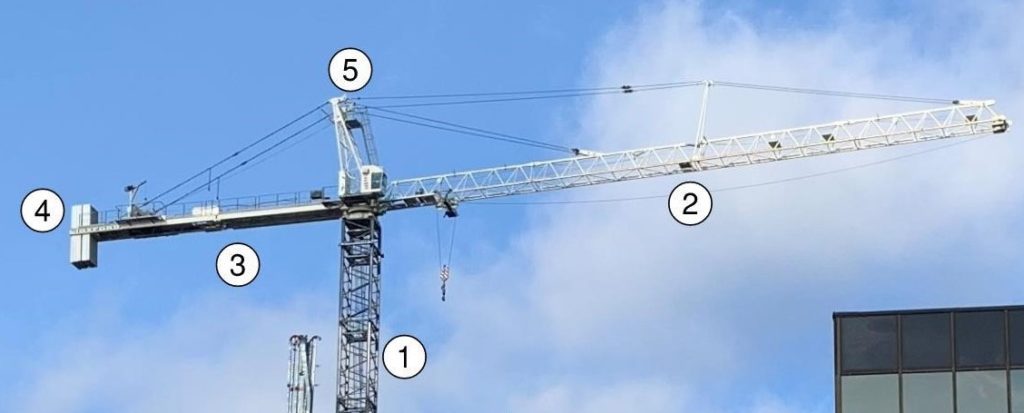
The most active part of the crane is the trolley rolling back and forth along the jib, moving the hook block (the hoisting mechanism that moves up and down) to carry the construction materials needed to build the high rise. The operator sits in his/her cab near the tower to control the crane, giving the optimal view of the entire job site, and always keeping the hook block and its load in view. The connection between the tower and the crane rests on a turntable, which allows the crane to rotate 360 degrees. See Figure 2 for crane parts.
Sometimes the operator can’t see where the hook is connected to a load that needs to be carried up to the top of the high rise, so he/she is in constant radio contact with the personnel on the ground coordinating every crane pick (see Figure 3).
The tower crane is usually assembled at an intermediate free-standing height for initial building construction, then later extended with the growth of the high rise, using the structure for added stability by anchoring to it using specialized bracing (see Figure 4). The building designers need to know where these anchor points will be so they can ensure the floor slabs and walls are reinforced sufficiently to accommodate the lateral loads of the crane.
The initial assembly of a tower crane requires a smaller mobile crane to do the heavy lifting. As the project increases in height, the tower follows using a special mechanism called a climbing unit. This unit climbs up the tower using hydraulic jacks, raising the crane with its turntable, making room for another tower section below it (see Figure 5).
There are several types of tower cranes. The crane in Figure 5 is a luffing-jib tower crane, which has a boom that can raise and lower like a mobile crane as opposed to a fixed horizontal jib with a moving trolley and hook block like in Figure 1.
The operator climbs the entire tower through ladders in each section to get to the cab. The project eventually modifies the access using a construction elevator in the building and a ramp part-way up the tower to climb the remaining height to the cab (see Figure 6).
The real answer to “how do tower cranes not fall over?” is that sometimes they do. In 2020, there were two tower crane failures in Toronto with no loss of life…miraculously! Both were due to faulty installation. There was a fatal incident in Kelowna, B.C., in 2021. As easy as these cranes make it look, they come with a lot of engineering and a lot of instructions. And they are assembled and maintained by professionals. Like most construction equipment, if we take good care of them, they’ll take good care of us. Stay safe!
Trivia
Tower cranes are required to have a means of emergency evacuation for the operator or anyone at the top of the crane in the event that person is unable to evacuate using the ladder. Most have a davit arm capable of hoisting a stretcher with a person all the way down to the top of the high rise (see Figure 7).
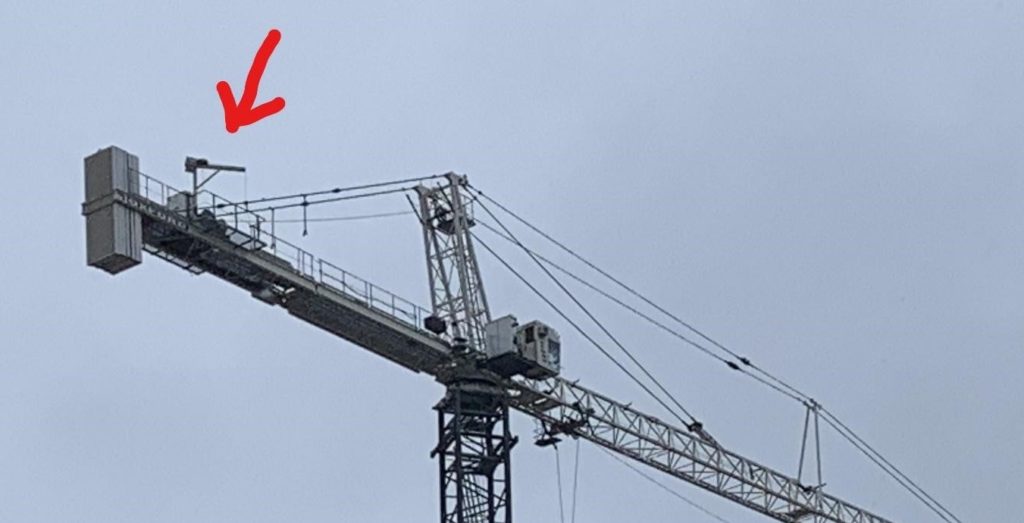
Have you seen an interesting building or piece of infrastructure in or around Burlington that you’d like Eric Chiasson, your personal engineer, to write about?
Send us your suggestions, comments, or questions to articles@local-news.ca and we’ll see what Eric can find out!
Sources:
Big Rentz. 2020. How do Construction Cranes Work? Url: https://www.bigrentz.com/blog/how-cranes-work (accessed Dec. 24, 2021).
Art of Engineering. 2020. How Tower Cranes Build Themselves. Url: https://www.youtube.com/watch?v=oSyC8pxJdeQ (accessed Dec. 19, 2021).
For more information on the author: https://www.linkedin.com/in/eric-chiasson-10601082


